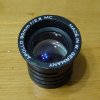Rushthezeppelin
Member
So I finally got all my stuff in to start reloading for me AR. Dillon headspace gage came in today and I had a question about how to accurately read it. So I know basically if its above or below the steps you need to resize more or toss the case. Pretty obvious if it's above the top step but I'm having trouble figuring out if a case is below or right at the lower step given the bevel on the head of the cartridge. Is it basically only if it's obviously below that you scrap one or is there some special way to determine if it's a hair below without using the depth measurement on my caliper?


